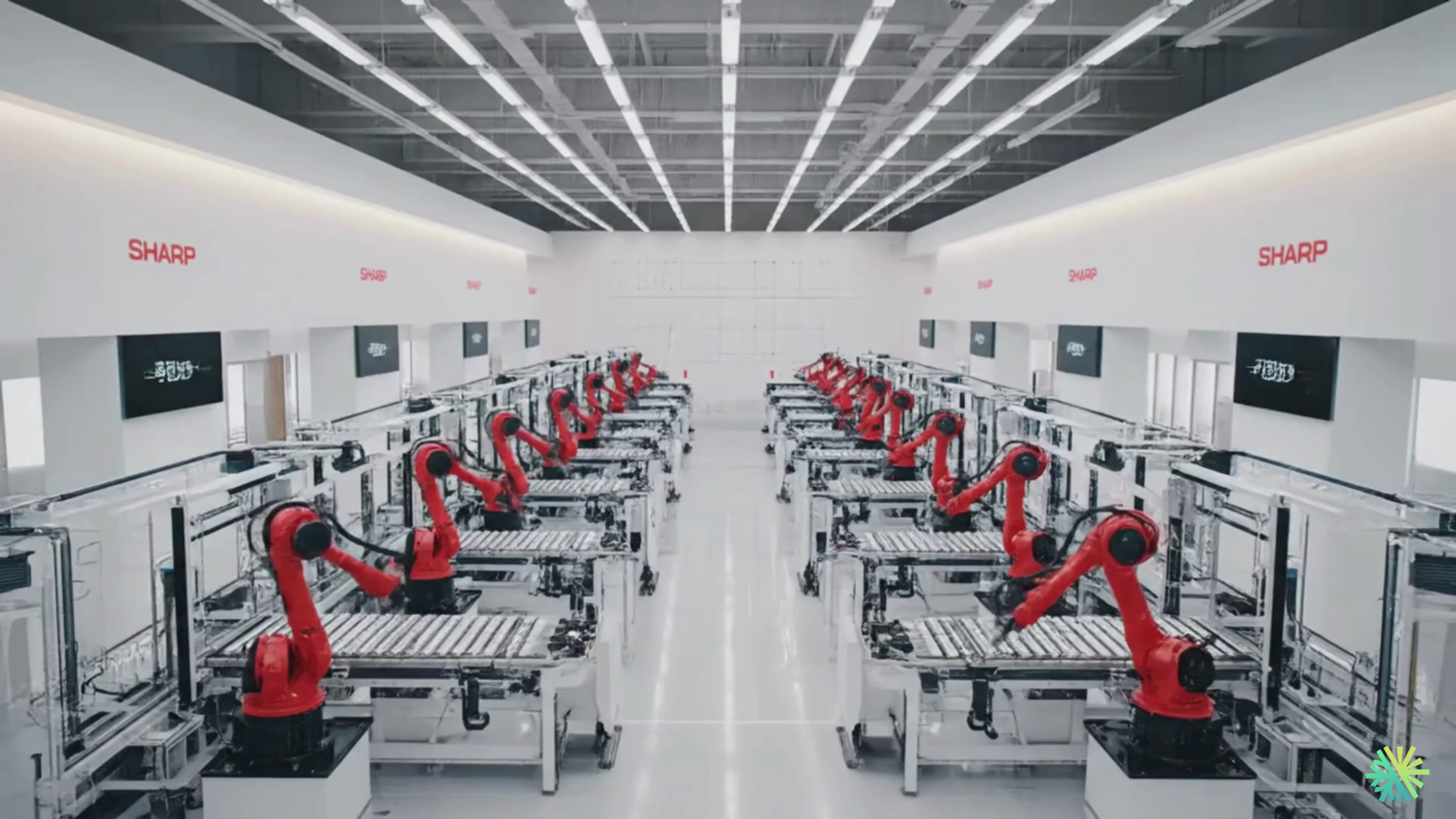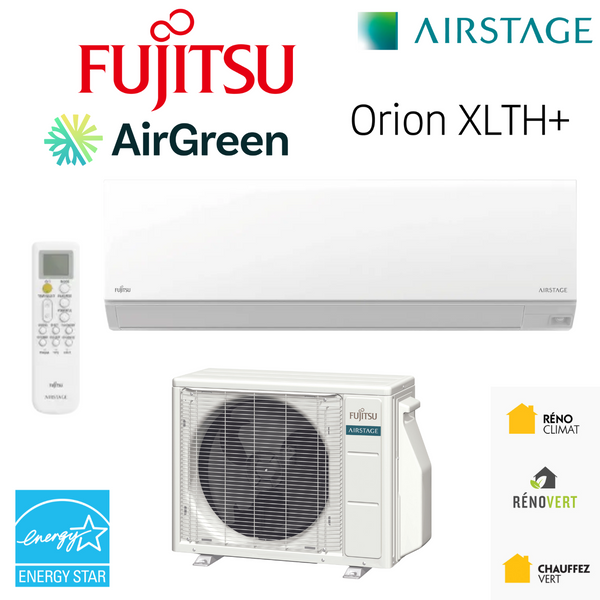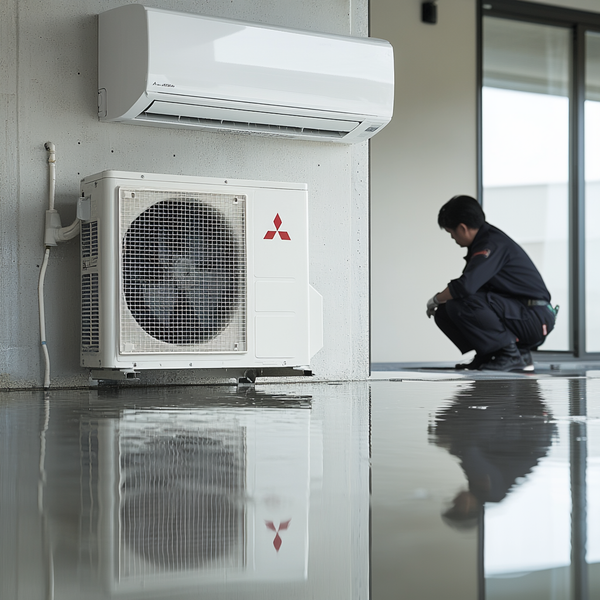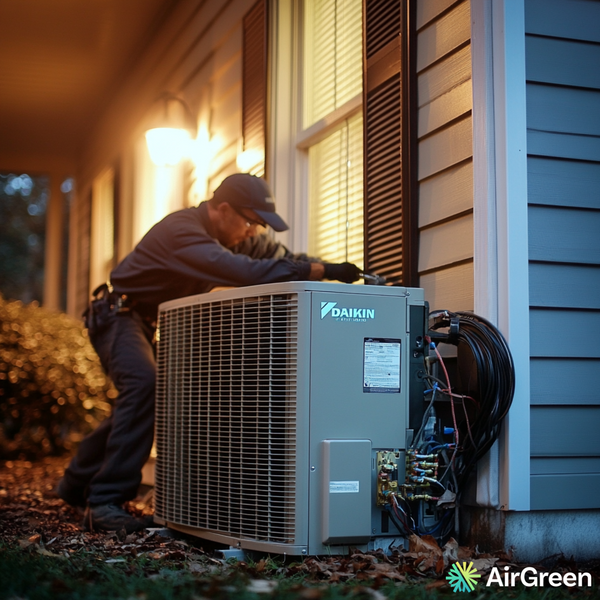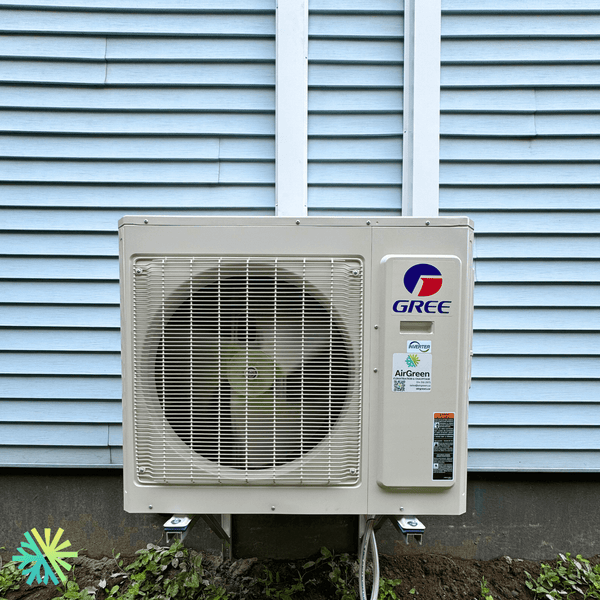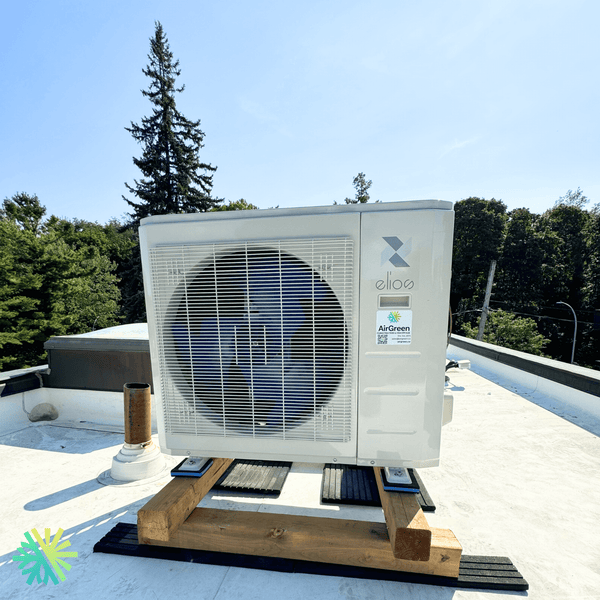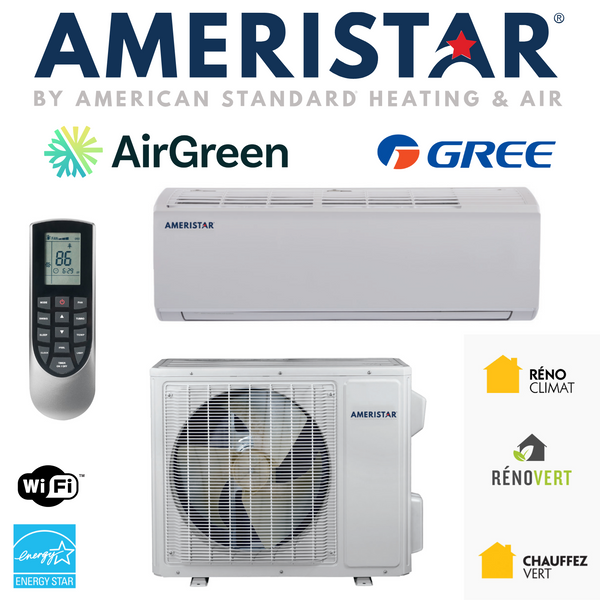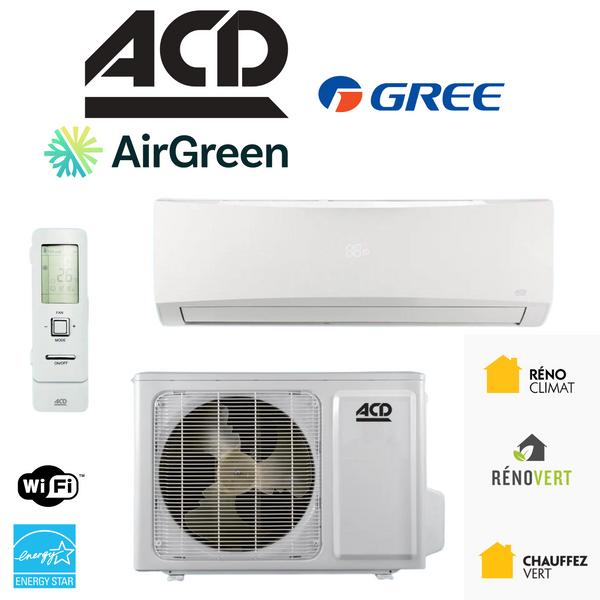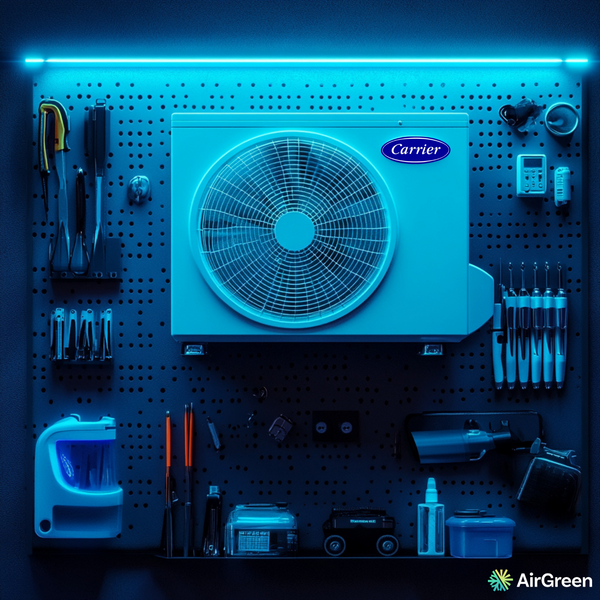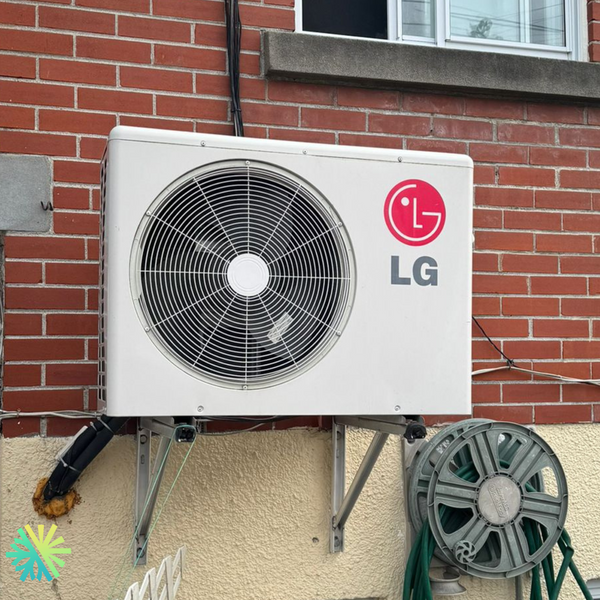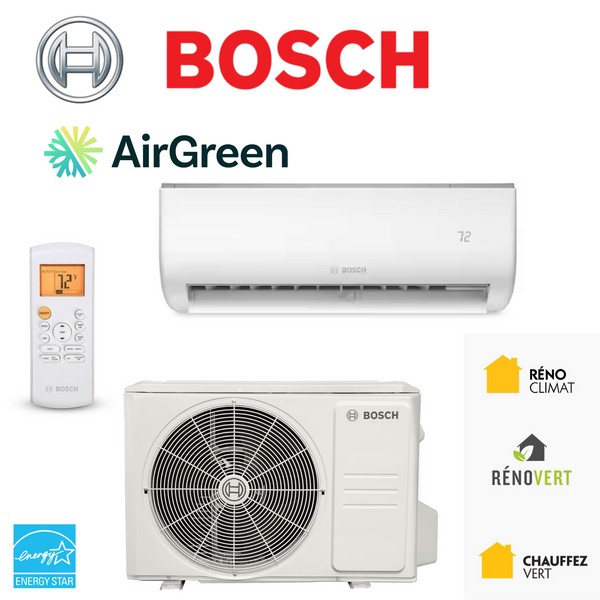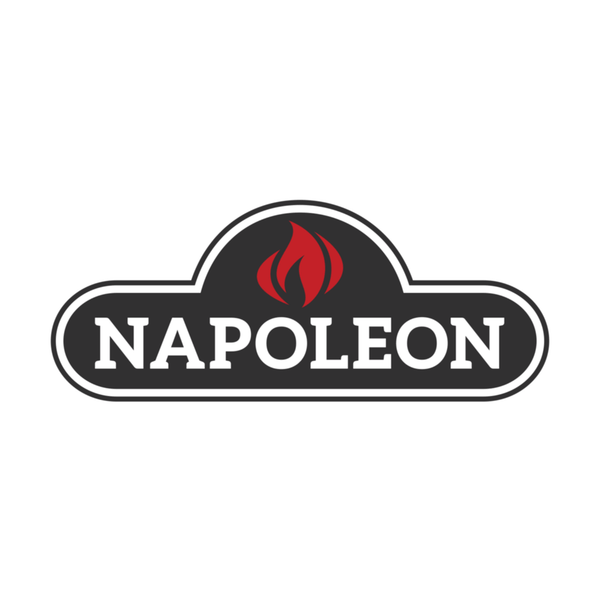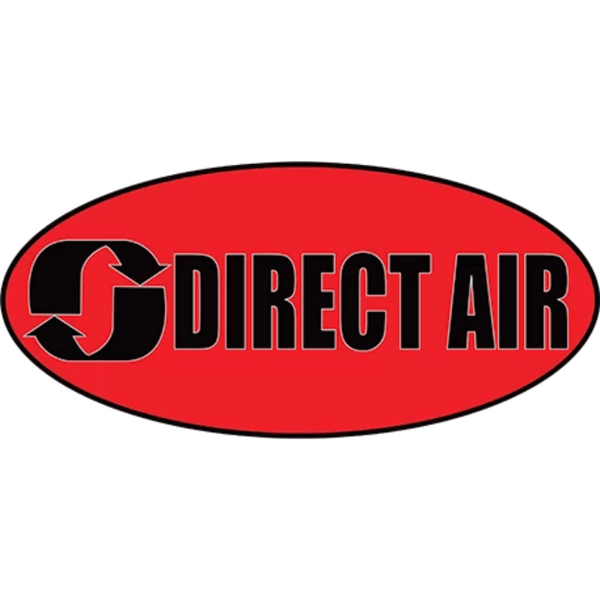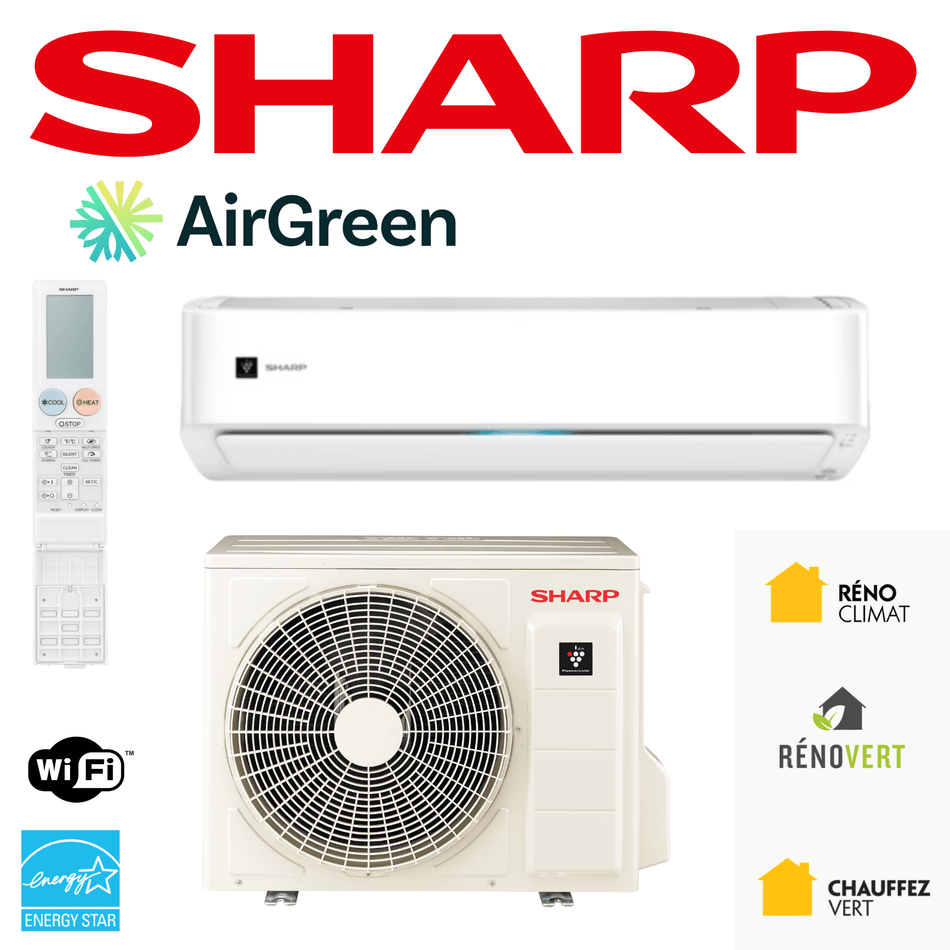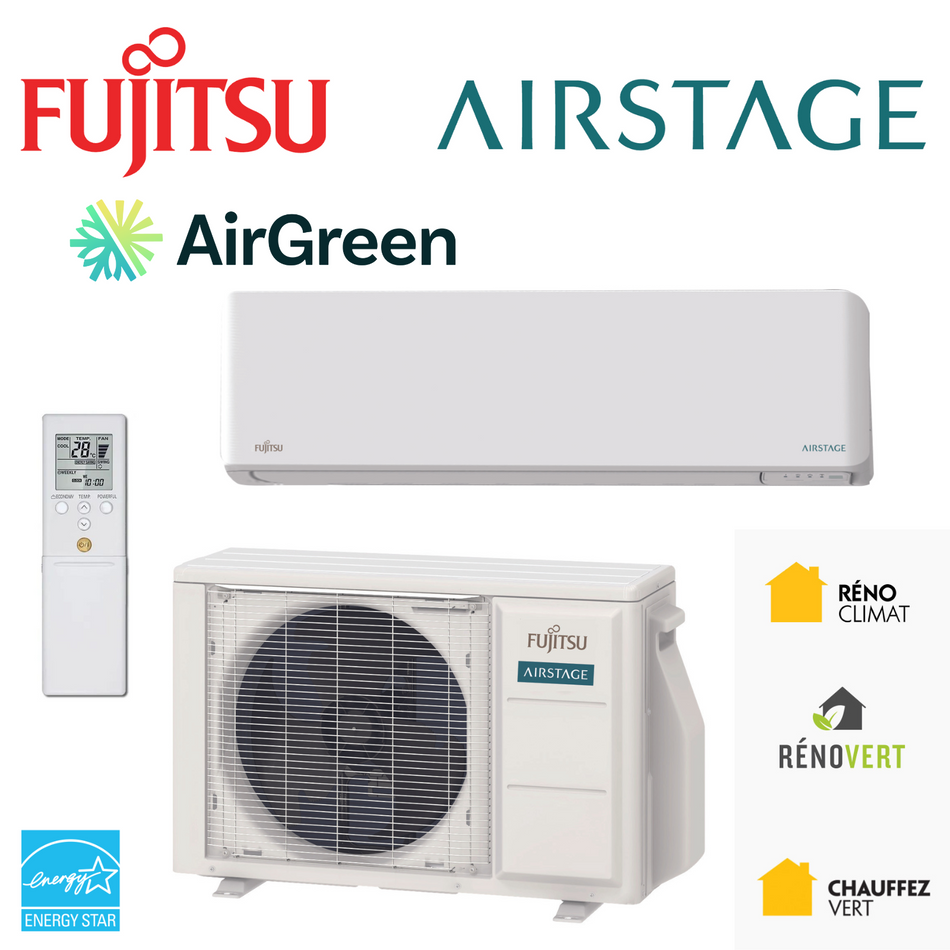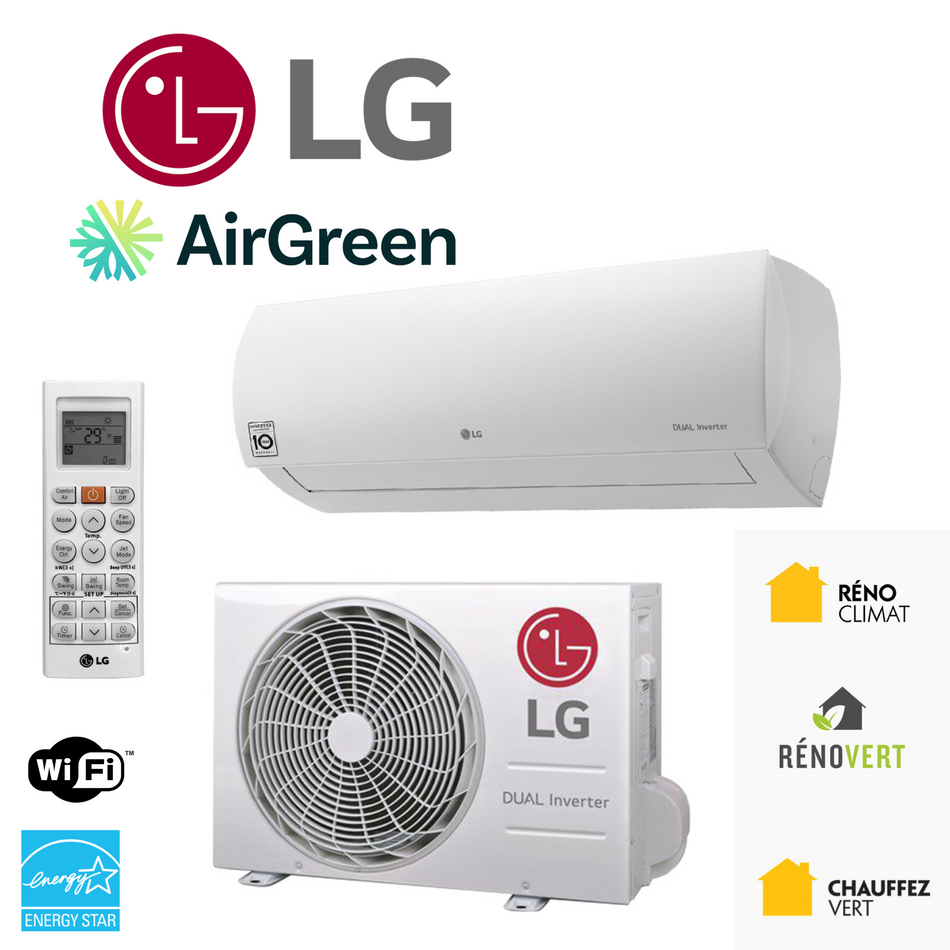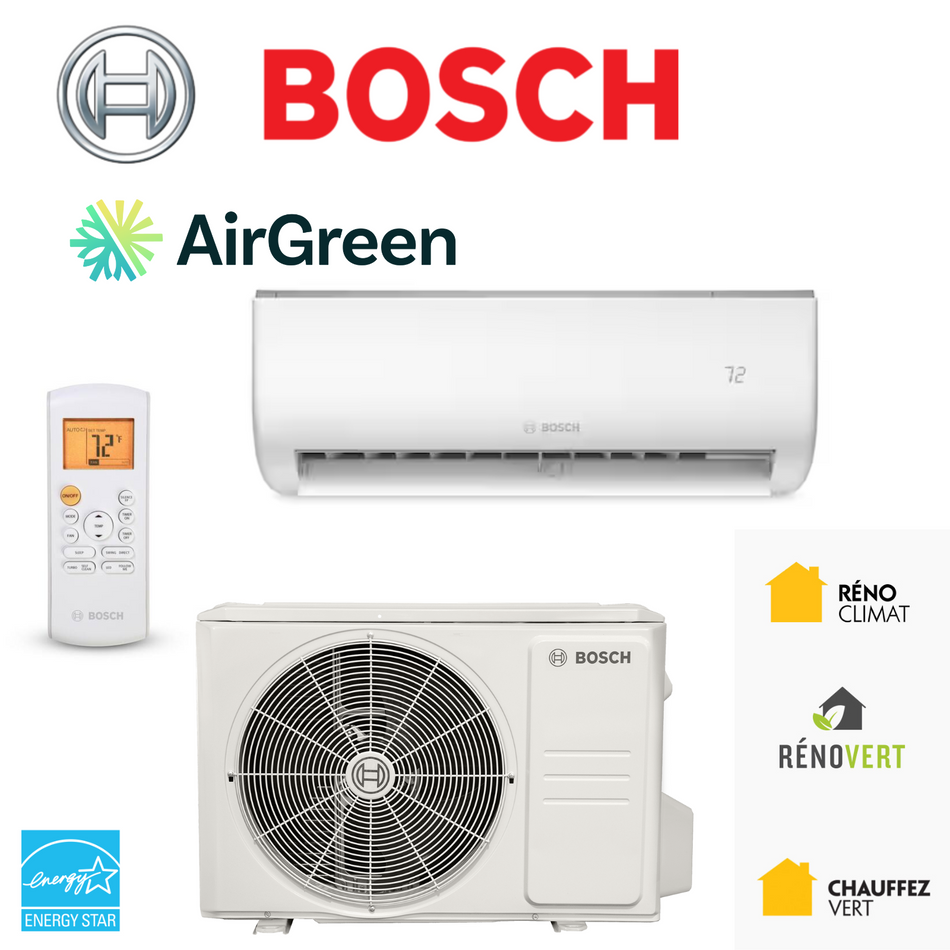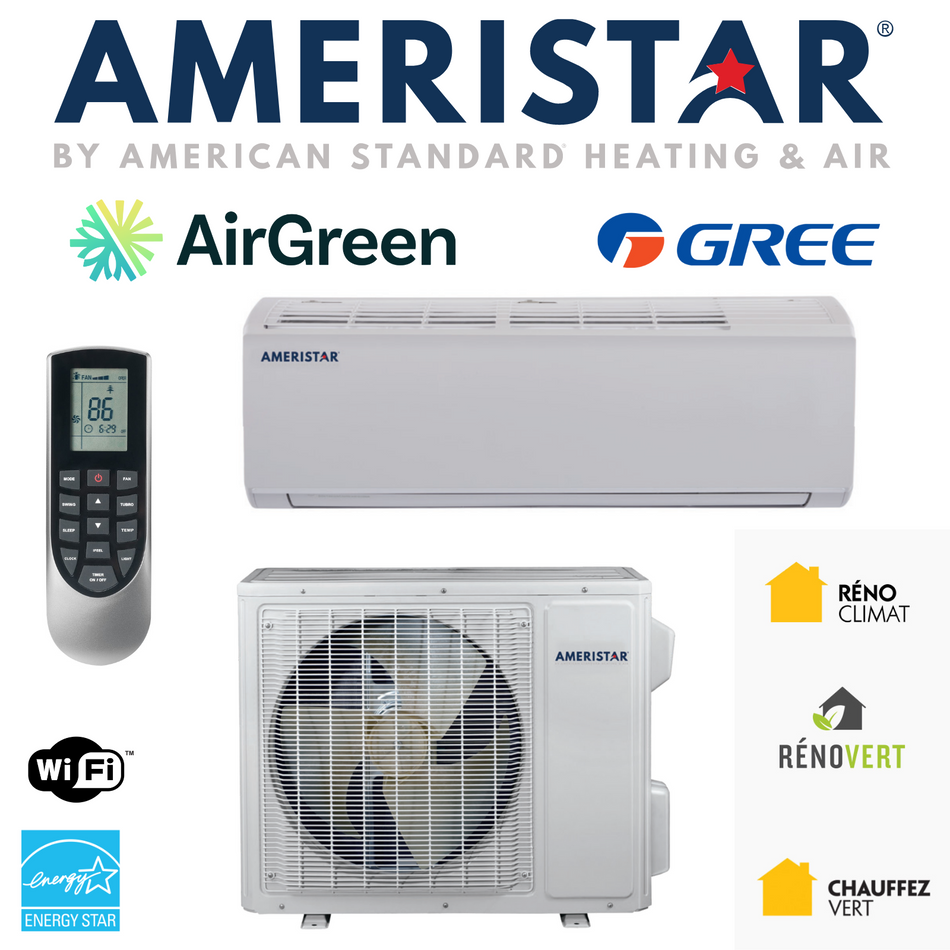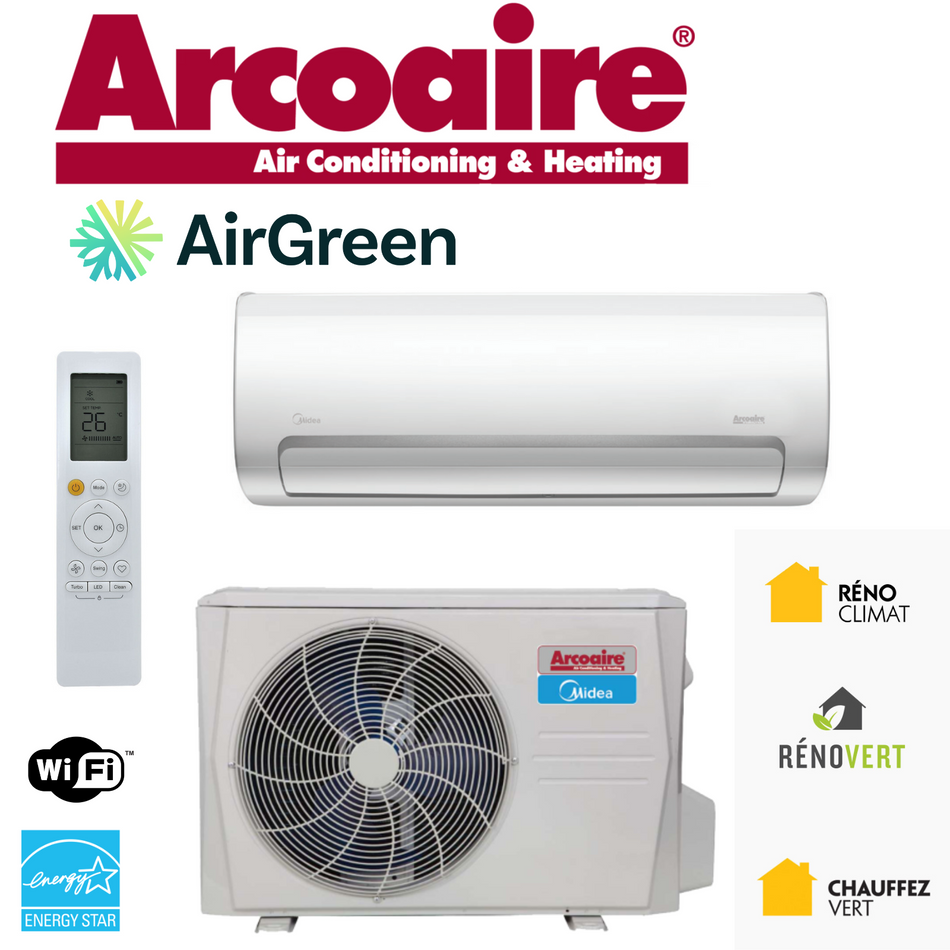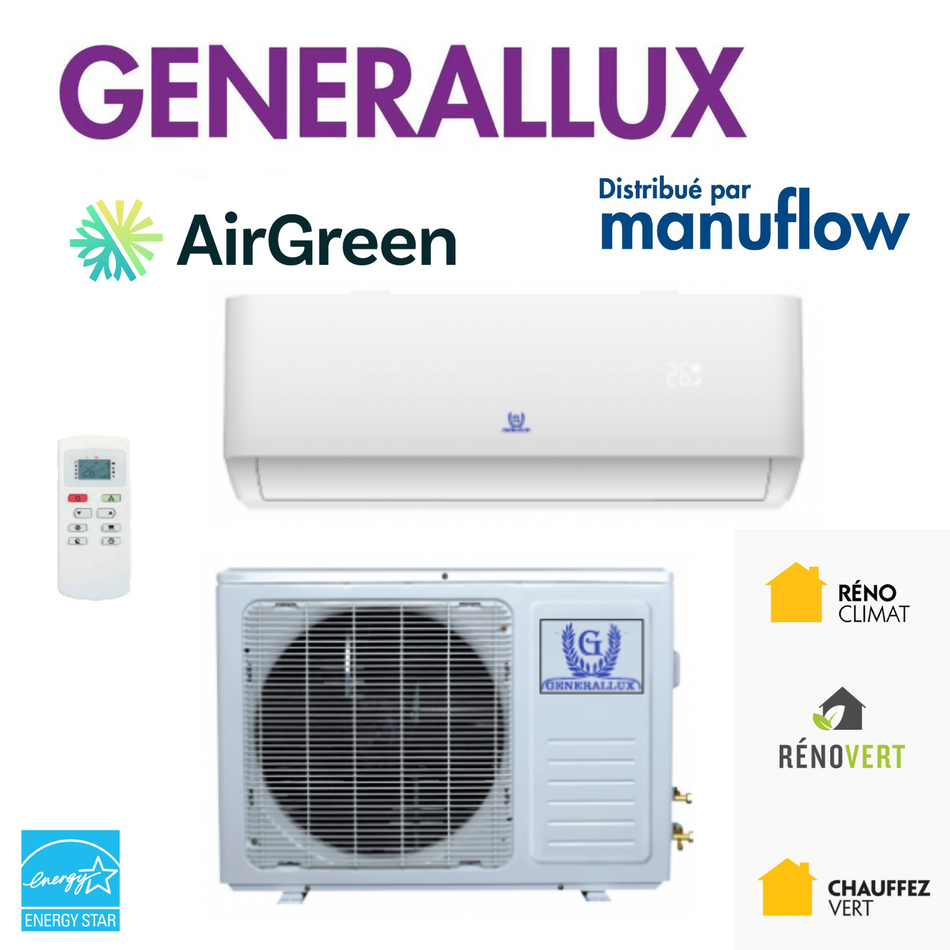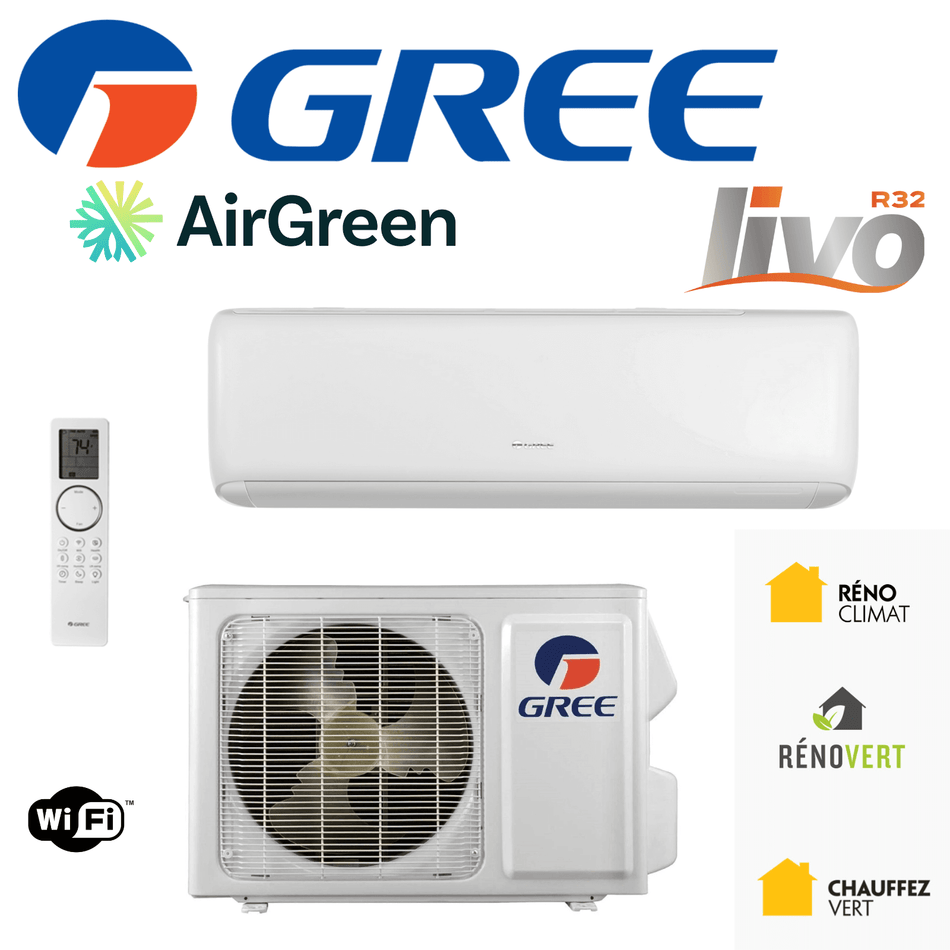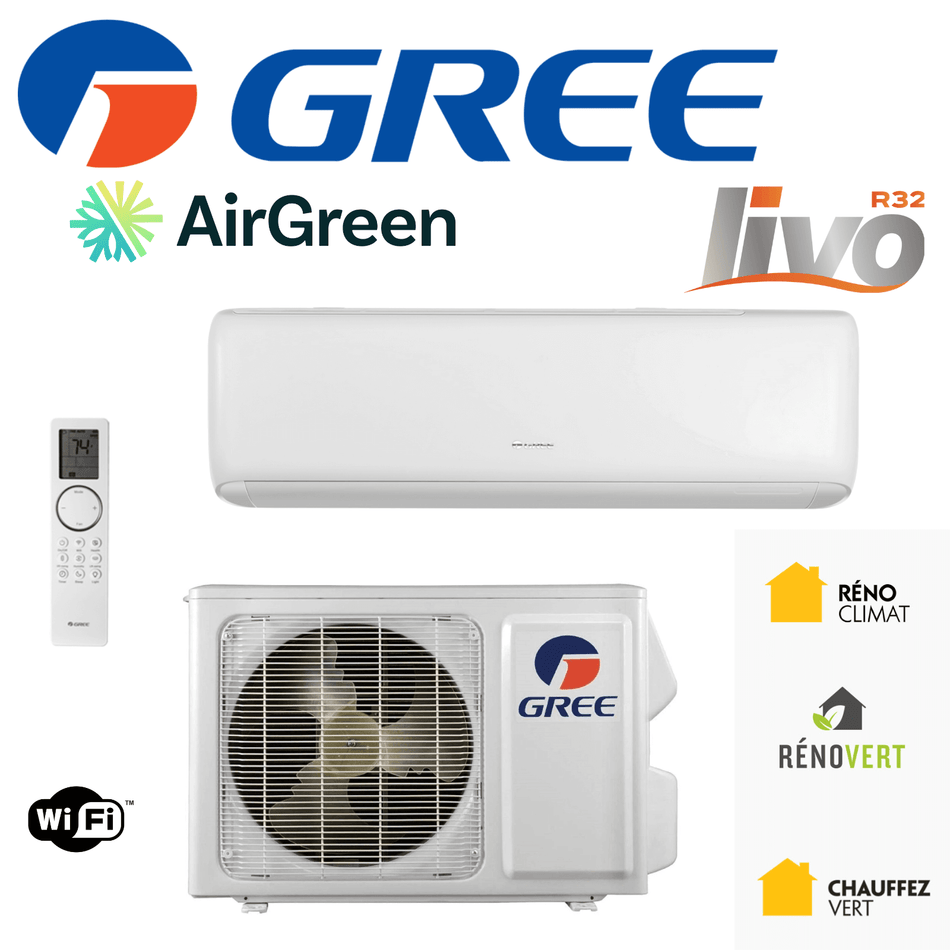A wall-mounted heat pump moves heat rather than creating it.
- In summer : it captures the heat and humidity from the indoor air and releases them outside → air conditioning + dehumidification, more stable than a portable device.
-
In winter : it recovers the heat contained in the outside air (even in cold weather) and transfers it inside → high-efficiency heating, ideal for Montreal and its surrounding areas.
Inverter : Most of the models we install use a variable speed compressor. The machine automatically modulates its power to maintain the temperature smoothly , with less noise and less energy .
Smart defrost : In very cold weather, the outdoor unit may form frost. The system then switches to a short, automated defrost cycle to clear the heat exchanger, then resumes heating. This is normal and expected for our climate.

